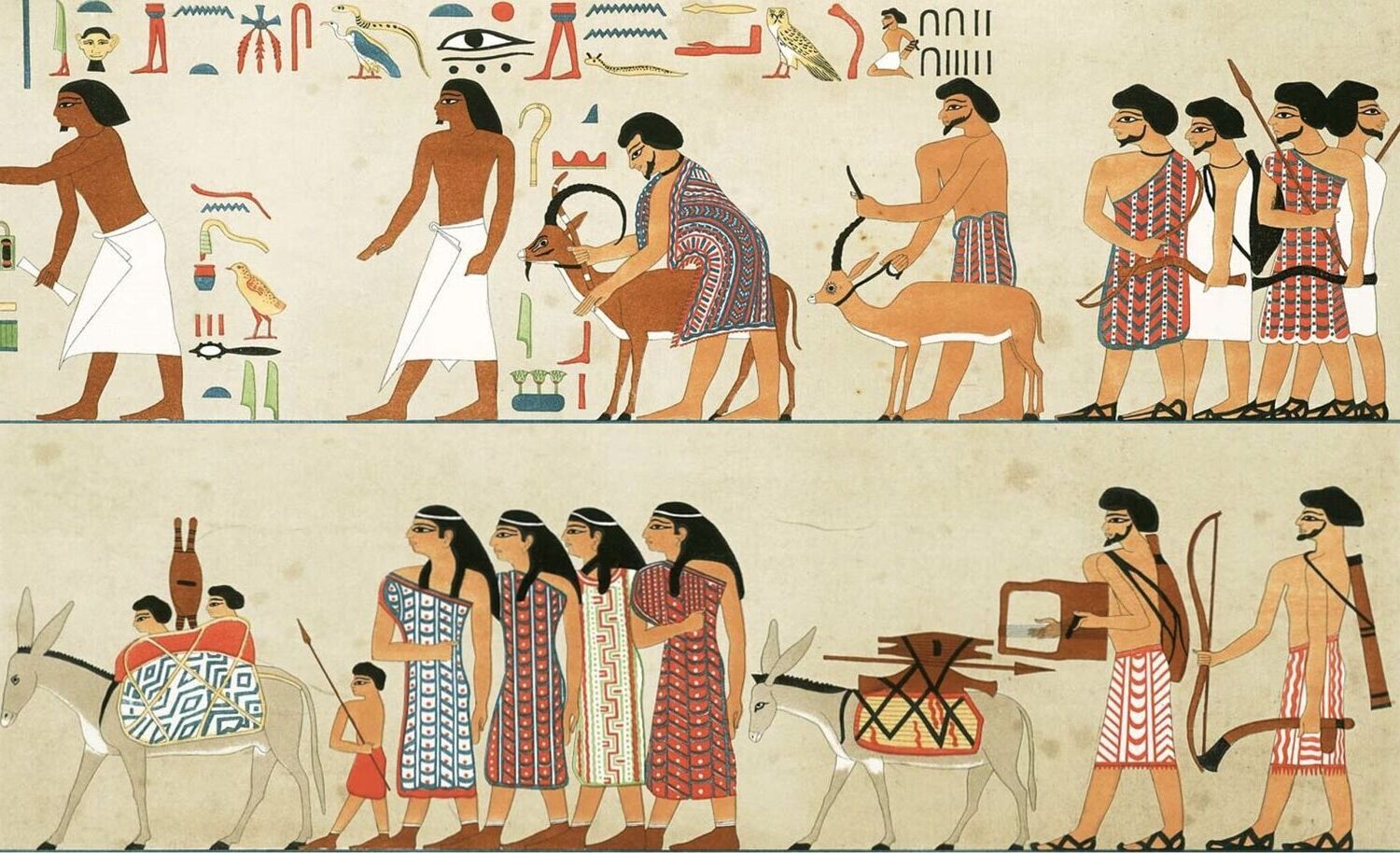
What was the Conquest of the Hyksos? The Conquest of the Hyksos was a turning point in ancient Egyptian history. Around 1650 BCE, the Hyksos, a group of Semitic invaders from the Near East, took control of Lower Egypt. They ruled for nearly a century, introducing new technologies and cultural practices. However, the Theban kings in Upper Egypt resisted their rule. Ahmose I, a Theban king, led a series of military campaigns to drive the Hyksos out, culminating in the Battle of Sharuhen. This victory marked the end of the Second Intermediate Period and the start of the New Kingdom, a time of great cultural and economic prosperity for Egypt.
The Hyksos Invasion and Initial Conquest
The Hyksos invasion marks a significant chapter in ancient Egyptian history. This group of Semitic peoples from the Near East brought new challenges and changes to Egypt.
-
The Hyksos, meaning "rulers of foreign lands," invaded Egypt around 1650 BCE. They primarily came from the Levant and Syria, initiating the Second Intermediate Period.
-
They initially conquered Lower Egypt, which was less fortified. This region was more vulnerable to invasion, making it easier for the Hyksos to establish control.
-
Avaris became the primary city of the Hyksos and served as their capital. Located in the northeastern Nile Delta, Avaris was a significant urban center with advanced infrastructure.
Hyksos Rule and Egyptian Resistance
Despite their dominance, the Hyksos faced continuous resistance from the native Egyptians, particularly from the Theban kings in Upper Egypt.
-
The Hyksos ruled Egypt for nearly a century. They introduced new technologies, military tactics, and cultural practices, including their deities like Baal and Astarte.
-
The Theban kings resisted the Hyksos invasion. They maintained a strong sense of Egyptian identity and culture, refusing to be fully subdued.
-
Ahmose I, a Theban king, organized a resistance movement. He is often credited with leading the final campaign against the Hyksos, reclaiming Egypt for the Egyptians.
Ahmose I's Campaigns and the Battle of Sharuhen
Ahmose I's military campaigns were crucial in driving the Hyksos out of Egypt. His strategic victories marked the beginning of a new era.
-
Ahmose I launched a series of military campaigns against the Hyksos. These campaigns eventually drove the invaders out of Egypt.
-
The Battle of Sharuhen was a significant turning point. Ahmose I's victory at this key Hyksos stronghold weakened their grip on Egypt.
-
Ahmose I's military campaigns culminated in the reconquest of Egypt. He reasserted Egyptian control over the entire country, including Lower Egypt.
Establishment of the New Kingdom
The expulsion of the Hyksos marked the beginning of the New Kingdom, a period of great cultural, military, and economic achievements.
-
The reconquest of Egypt by Ahmose I marked the beginning of the New Kingdom. This period is known for its significant cultural, military, and economic achievements.
-
Ahmose I established a new capital city, Thebes. Modern-day Luxor, Thebes became the center of Egyptian power and culture.
-
Ahmose I implemented significant military reforms. These included the introduction of new technologies and tactics, making the Egyptian army more efficient.
Cultural Revival and Economic Prosperity
The New Kingdom period saw a resurgence in Egyptian culture and significant economic growth, driven by trade and diplomacy.
-
The New Kingdom period saw a cultural revival in Egypt. Ahmose I and his successors encouraged the arts, architecture, and literature.
-
Trade and diplomacy flourished during the New Kingdom. Egyptian merchants and diplomats established trade routes with neighboring countries, fostering economic growth.
-
The New Kingdom period was marked by extensive foreign campaigns. Pharaohs like Thutmose III and Ramses II expanded Egypt's borders through military conquests.
Architectural Achievements and Legacy
The New Kingdom period left a lasting legacy through its architectural achievements and the blending of Egyptian and Near Eastern traditions.
-
The Amarna Period was a brief interlude during the New Kingdom. Lasting from around 1353 to 1336 BCE, it was characterized by significant cultural and diplomatic changes.
-
Ramses II fought a significant battle against the Hittites at Kadesh. Although tactically inconclusive, it led to a peace treaty that lasted for centuries.
-
The New Kingdom period saw numerous architectural achievements. Grand temples like Karnak and Hatshepsut's temple at Deir el-Bahri showcased Egyptian engineering and artistic skills.
-
The New Kingdom period was marked by significant economic prosperity. Control over trade routes and rich resources allowed for extensive economic growth.
-
The conquest of the Hyksos had a lasting impact on Egyptian history and culture. It introduced new technologies, military tactics, and cultural influences that shaped Egyptian society for centuries.
The Lasting Impact of the Hyksos Conquest
The Conquest of the Hyksos was a game-changer for ancient Egypt. Their invasion around 1650 BCE shook things up, leading to the Second Intermediate Period. The Hyksos brought new technologies, military tactics, and cultural practices that left a lasting mark. But the Egyptians, especially the Theban kings, didn't just sit back. Ahmose I led the charge, driving the Hyksos out and reclaiming Egypt. This victory kicked off the New Kingdom, a period of incredible cultural, military, and economic achievements. Thebes became the new capital, and Egyptian society flourished. The Hyksos' influence, though, didn't just vanish. Their legacy lived on in the blending of Egyptian and Near Eastern traditions. The Conquest of the Hyksos wasn't just a historical blip; it was a turning point that shaped the future of ancient Egypt.
Was this page helpful?
Our commitment to delivering trustworthy and engaging content is at the heart of what we do. Each fact on our site is contributed by real users like you, bringing a wealth of diverse insights and information. To ensure the highest standards of accuracy and reliability, our dedicated editors meticulously review each submission. This process guarantees that the facts we share are not only fascinating but also credible. Trust in our commitment to quality and authenticity as you explore and learn with us.


